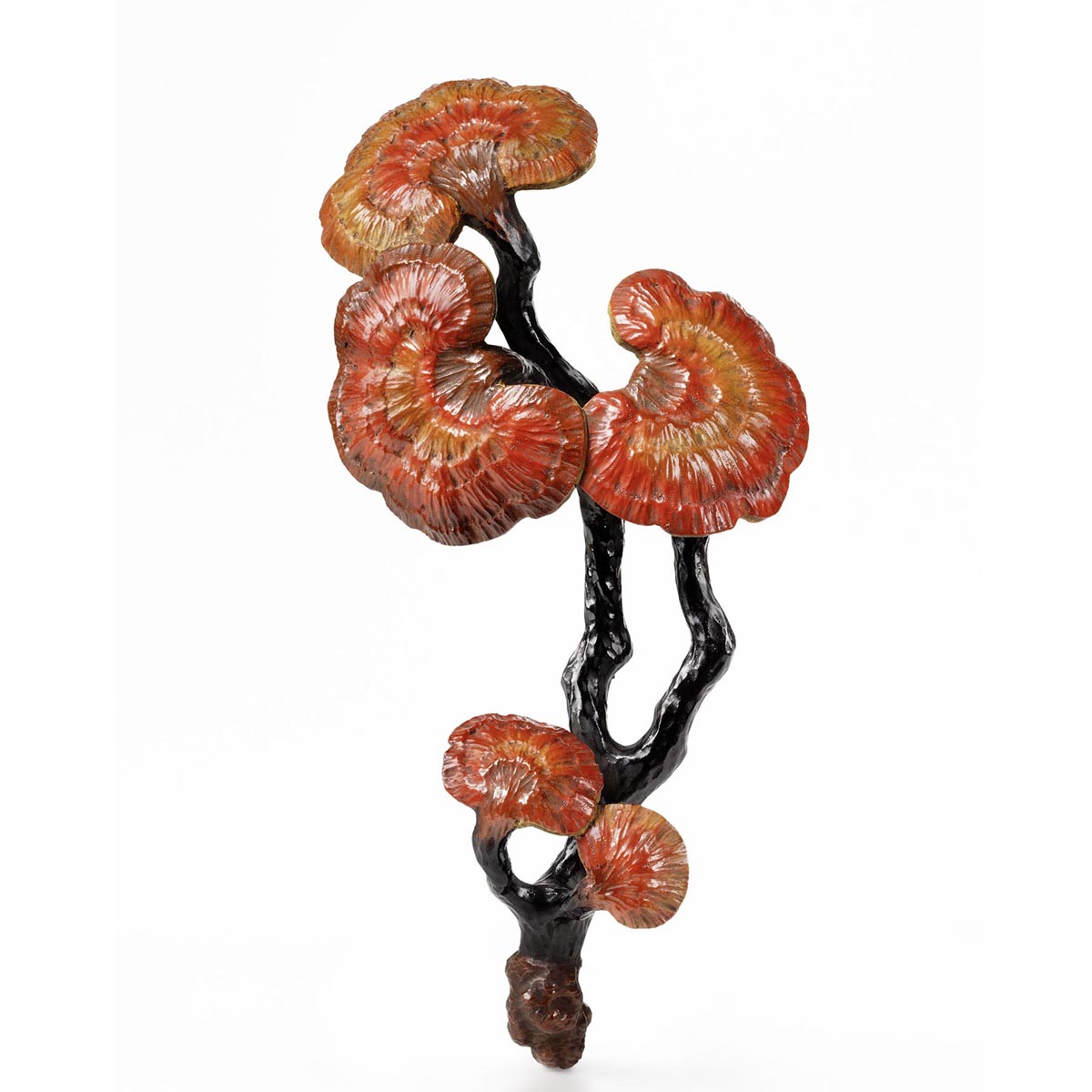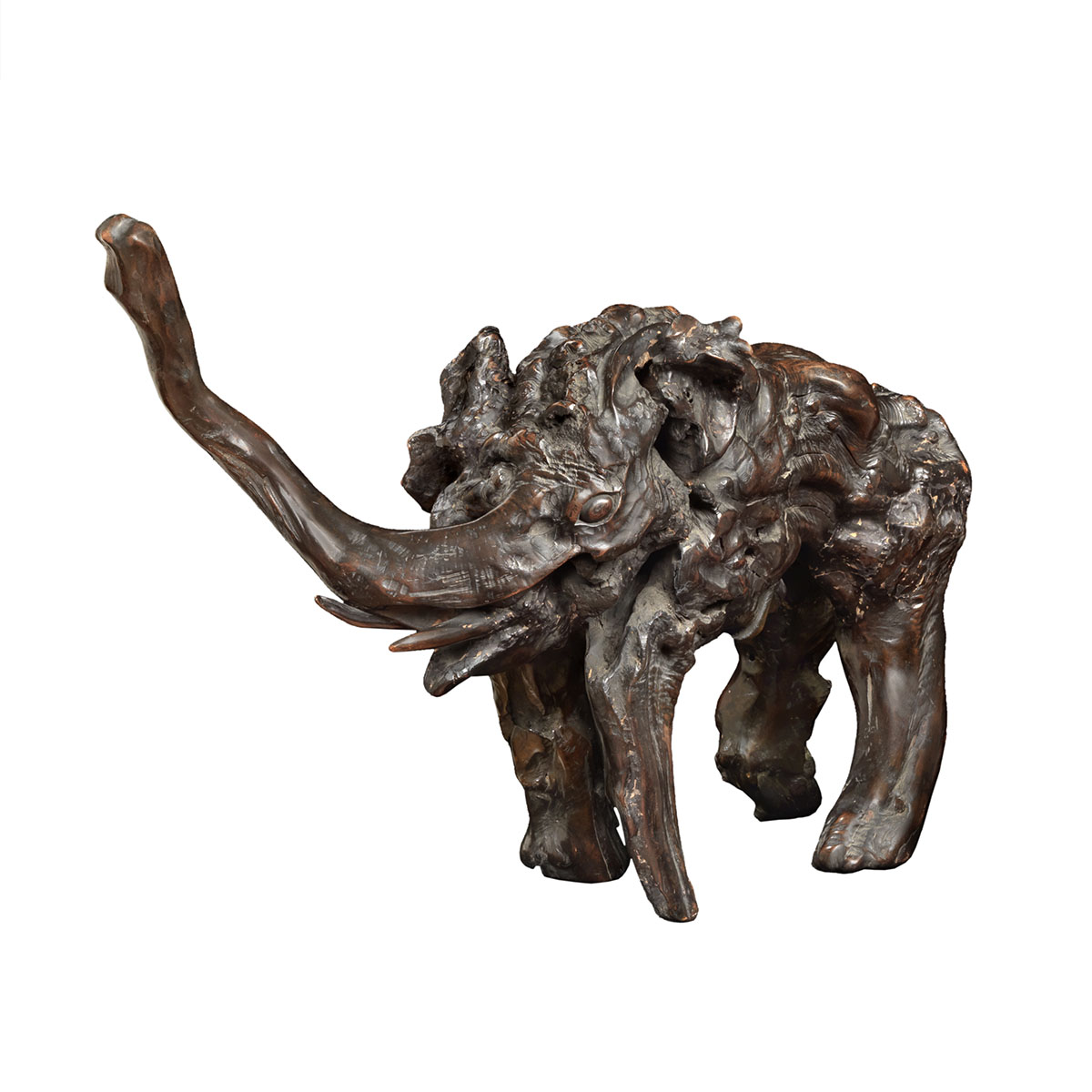Nyoi reishi
Sculpture
- Sold
-
Material
Carved wood and coloured lacquers
-
Size
32.5 (h) x 15.5 x 8.5 cm
-
Period
Showa period ca. 1930
Description
Nyoi reishi okimono by Takahashi Kanzan (1883-1942)
[Sceptre (nyoi) in the shape of “longevity mushroom” (reishi), okimono]
Takahashi Kanzan worked in the Sanuki carved lacquer tradition, based in Takamatsu City, Kagawa Prefecture, Shikoku Island.
The founding father of this technique (Sanuki choshitsu) was Tamakaji Zōkoku (1806-1869).
His two foremost diciples were Takahashi Kanzan and Ishii Keidō (1877-1944), the latter taught Otomaru Kōdō (1898- 1997, who was later appointed as a Living National Treasure artist in 1955).
Takahashi Kanzan and Ishii Keidō contributed a great deal to the revival of Sanuki Itto-bori (Sanuki wood carving). Some earlier Sanuki wood carvers were highly trained shrine carpenters (miya daiku) and made okimono objects using the wood of Shinto shrines and Buddhist temples, often using camphor tree (kusunoki) or pine wood (matsu).
Like the Goshiki-un 五色雲(“five coloured clouds”), 五頭霊芝the Gozu Reishi fungi is revered as an auspicious symbol in Zen Buddhism, having the super natural power of granting wishes and miraculous events. The five Reishi fungi, as in this example, resemble the swirling clouds in Heaven.
Seal "Kanzan jin” “Kōrindō”
Signature box's lid (Tomobako hakogaki)
“Kibori, gozu zuishi, Kōrindo ni oite tsukuru, Kanzan-jin”
[Wood carving, Auspicious Reishi with five fungi heads, made by Kanzan, at the Kōrindō studio]


